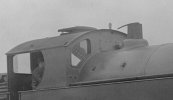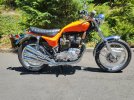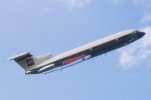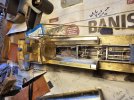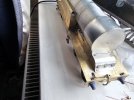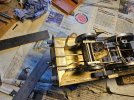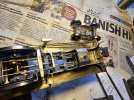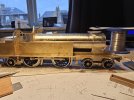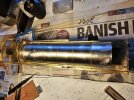Well the over dramatic picture of the cab front (see last week's post) didn't become a problem. The boiler fitted over the raised former.....just!
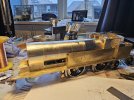
I spent the beginning of the week fitting everything up. First rolling the boiler and fitting the formers, and creating the firebox sides. I know it can't really be seen but it seemed more professional than to just cut a hole for the motor. I put a piece in for the front of the firebox, so that if anyone stares under the boiler with a powerful torch, that area of the boiler will be closed. There were some in-fill pieces to be added around the top of the cylinder block and smokebox rear area. I also added boiler bands, largely because I find it therapeutic, and the cleats at the bottom of the boiler. The L section infill piece between the front of the cab was made in the usual way. I scored the shape of the end of the firebox onto a sheet of thin nickel silver and cut it out. Then scored a line 1.2 mm round this, and carefully cut this out. This produced a thin horseshoe shaped strip of brass that I could solder to the end of the boiler. A thin boiler band was then soldered up to this to replicate the L section. Theres a cover plate at the top of the cab front, that partly covers the L section. I soldered this to the vertical portion of the L section. It'll eventually be soldered to the cab front, so no possibility of the painter breaking it off!
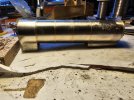
I made wash out plugs, and then repeated the whole process again to make a second boiler assembly! Of course it was much quicker second time round!
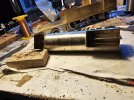
With the boiler fitted up it was time to close up the water tanks. I cut out around 30 panels to do this. The base of the water tanks are raised up 6'' above the footplate top, and the tanks have arc shaped splashers for the driving wheels let into them. If you zoom into the next picture you can see that I have not bothered to clean up my blobby soldering as it will be internal.
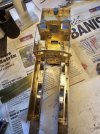
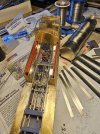
The inside of the tanks look a bit untidy, and you can see that I have added a couple of lead sheets inside the void for balast. (The client lives in a tropical climate and lines the lead to be painted with an acid etch primer to prevent any corrosion.) The underside of the model looks good though, and the tank splashers are worth the effort I think.
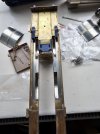
The remaining inner panels to close the tank are here ready to go, but I ran out of working week!
I should be able to get round to finishing the remaining details next week, now all the main structures are complete. I reckon I've used about 20% of the kit. I used the footplate, body sides, cab front and rear and bunker rear. Most of those parts were heavily modified though.
